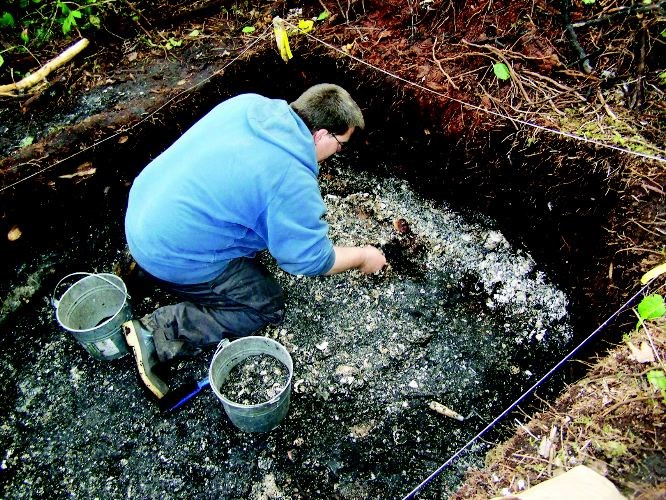When local anthropology students return to class this fall, they will definitely have something interesting to share in their "What I Did This Summer" essays.
From June 6 to July 29, six University of Northern British Columbia (UNBC) students joined seven other students from other B.C. schools, the United States and First Nations' communities in the first excavation of a possible large and ancient village.
The project, a part of the university's archeology field school, took place in the Hakai Luxvbalis Conservancy on Calvert Island located off of the province's central coast, north of Vancouver Island.
But the nearly eight-week trip was no vacation.
"It's a fairly intensive field school for the students," said UNBC anthropology professor Farid Rahemtulla, who directed the project.
"It's a really heavy-duty, practical course that gives them all the skills they need to know."
Students will receive 15 credits for their participation, which is equivalent to five courses.
While this particular dig was the first in the site - the Heiltsuk and Wuikinuxv's traditional territory - the archeology school has typically conducted field projects in conjunction with First Nations groups.
"We try to incorporate a First Nations world view and bridge the gap between traditional knowledge and Western knowledge," Rahemtulla noted.
"This part of the coast is one that hasn't been investigated as much."
He completed his own field work in the remote area when he was earning his PhD and was eager to return.
"It was an amazing opportunity to learn about the ancient history of B.C. in this area."
The students excavated a large shell midden, turning up various tools made out of deer bones and antlers.
According to the professor, shell middens are very common along the B.C. coast. They are man-made areas containing remains of shellfish, animal bones and tools people have discarded.
"There's a neat story be told there," Rahemtulla said.
The UNBC group barely scratched the surface of the three to four-metre deep midden they worked on.
The participating students were the first archeological school to be supported by the Hakai Beach Institute, a non-profit teaching and research facility which helped out with their accommodations, food and transportation to the site.
It included Marshall Spinney, Wesley Worswick, Robyn Oxley, Cory Hackett, Patrick Bradely, Taryn Nygaard, Shannon Harris, Erica Dirks, Daniel Winter, Josh Vickers, Andrea Walkus, Jack Johnson and Rebecca Alway.
Though the field work is complete, there is still a lot more to be done in terms of analyzing and carbon dating the various samples and materials the team brought back.
"What people don't always understand is that for every day spent in the field we spend two to three days in the lab," Rahemtulla said.
Once analysis is complete, the professor said he will return to the community to present the findings and work with both of the First Nations groups to interpret the history of the area.



